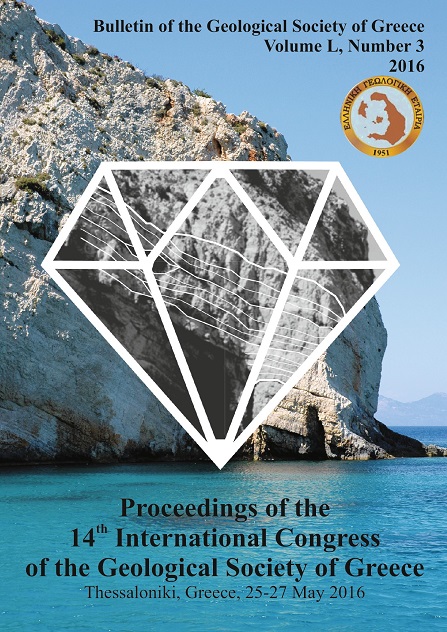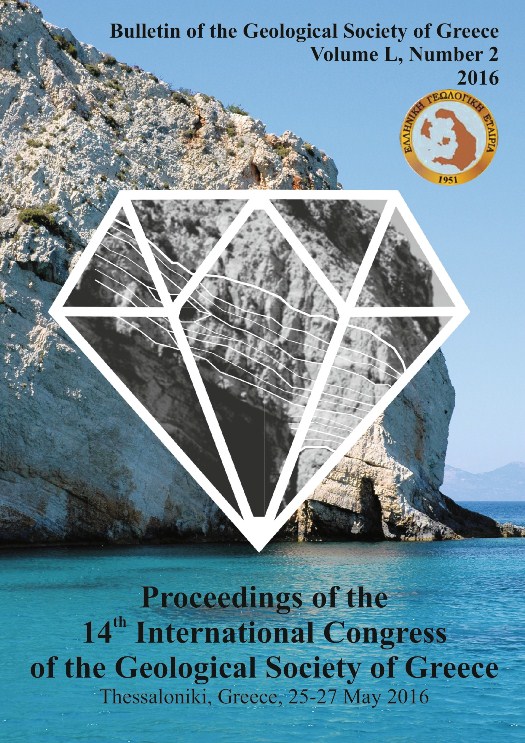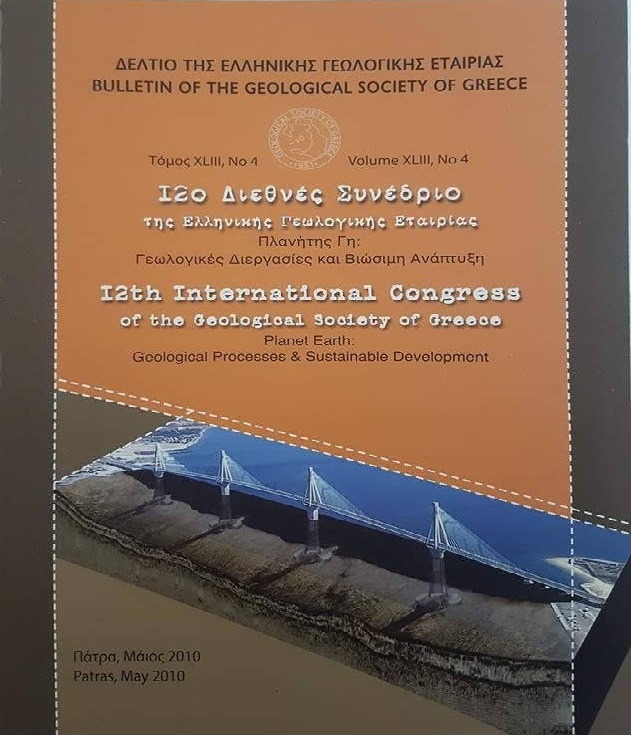SOME PRELIMINARY RESULTS ON THE DISTRIBUTION OF AFTERSHOCK SEQUENCES IN JAPAN-KURIL ISLANDS AND KAMCHATKA

Περίληψη
Στη παρούσα εργασία γίνεται η μελέτη των μετασεισμικών ακολουθιών που συμβαίνουν κατά μήκος της Ιαπωνίας, των νήσων Κουρίλες και της ευρύτερης περιοχής της Καμτσάτκας. Για τον σκοπό αυτό εξετάσθηκαν όλες οι μετασεισμικές ακολουθίες των περιοχών που προαναφέρθηκαν με μέγεθος κύριου σεισμού Mw >7.0 και κάλυπταν το χρονικό διάστημα 1973-2013. Στη μελέτη λήφθηκαν υπόψη μόνο οι επιφανειακοί σεισμοί. Είναι γνωστό επίσης ότι στη περιοχή της Ιαπωνίας συνέβη στις 11 Μαρτίου του 2011 ένας γιγαντιαίος σεισμός με μέγεθος Mw =9.0 και έτσι η εξέταση των μετασεισμικών ακολουθιών στην περιοχή είναι ιδιαίτερα ενδιαφέρουσα. Η μελέτη αυτή επικεντρώνεται στην χωρική κατανομή διαφόρων παραμέτρων που σχετίζονται με παραμέτρους άμεσα συνδεδεμένες με τις μετασεισμικές ακολουθίες
Λεπτομέρειες άρθρου
- Πώς να δημιουργήσετε Αναφορές
-
Olasoglou, E., Tsapanos, T., Papadimitriou, E., & Drakatos, G. (2016). SOME PRELIMINARY RESULTS ON THE DISTRIBUTION OF AFTERSHOCK SEQUENCES IN JAPAN-KURIL ISLANDS AND KAMCHATKA. Δελτίο της Ελληνικής Γεωλογικής Εταιρείας, 50(3), 1212–1221. https://doi.org/10.12681/bgsg.11827
- Ενότητα
- Γεωφυσική και Σεισμολογία

Αυτή η εργασία είναι αδειοδοτημένη υπό το CC Αναφορά Δημιουργού – Μη Εμπορική Χρήση 4.0.
Οι συγγραφείς θα πρέπει να είναι σύμφωνοι με τα παρακάτω: Οι συγγραφείς των άρθρων που δημοσιεύονται στο περιοδικό διατηρούν τα δικαιώματα πνευματικής ιδιοκτησίας επί των άρθρων τους, δίνοντας στο περιοδικό το δικαίωμα της πρώτης δημοσίευσης. Άρθρα που δημοσιεύονται στο περιοδικό διατίθενται με άδεια Creative Commons 4.0 Non Commercial και σύμφωνα με την οποία μπορούν να χρησιμοποιούνται ελεύθερα, με αναφορά στο/στη συγγραφέα και στην πρώτη δημοσίευση για μη κερδοσκοπικούς σκοπούς. Οι συγγραφείς μπορούν να: Μοιραστούν — αντιγράψουν και αναδιανέμουν το υλικό με κάθε μέσο και τρόπο, Προσαρμόσουν — αναμείξουν, τροποποιήσουν και δημιουργήσουν πάνω στο υλικό.




